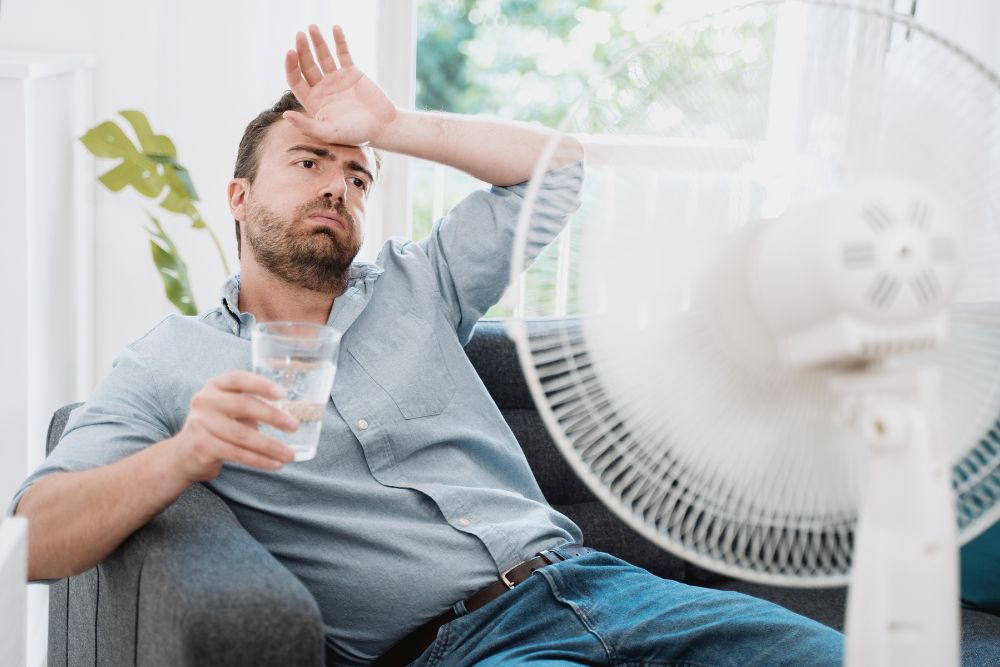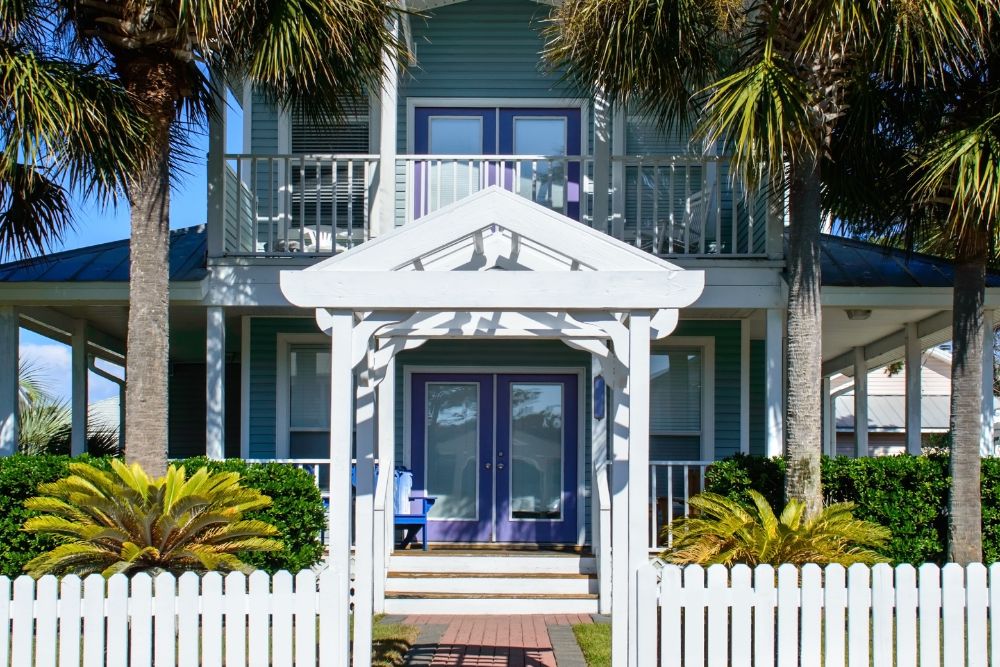Nothing beats the feeling of spending your summers down in beautiful South Florida. However, as anyone who lives here knows, combating hot and humid weather is not just something we have to cope with outdoors. Too much indoor humidity can make you uncomfortable day and night.
Humidity can also enter the home, and it can not only create an uncomfortable experience for homeowners, but it also can result in costly consequences. To help you reduce indoor humidity in your home, we’ve built this guide to help you keep your indoor environment cool, dry, and a true sanctuary from high temperatures and excess moisture in the air.
Primary Causes of Indoor Humidity

While a little bit of indoor humidity is necessary for a healthy indoor environment, too much of it can cause damage to the home and result in costly and time-consuming repairs. Before we can talk about controlling your indoor humidity levels, let’s first review some of the most common causes:
- Outdoor air: Warm, humid air from outside enters the home through open windows, doors, vents, or gaps in the building’s envelope.
- Cooking: Boiling water, simmering food, and using gas burners can produce steam and moisture.
- Showering and bathing: The use of hot water in showers and baths generates steam, which can significantly increase the indoor humidity levels in the bathroom and adjacent areas.
- Clothes drying: Wet clothes, whether hung to dry indoors or placed in a dryer without proper venting, can release moisture into the air.
- Houseplants: Some houseplants, such as tropical species, can release moisture into the air via a process known as transpiration.
- Leaks and water damage: Plumbing leaks, roof leaks, or water damage from flooding can introduce large amounts of moisture into a home.
Controlling Your Home’s Airflow
Let’s focus deeper on outdoor air breaching your home’s interior.
Warm air rises and cold air sinks because of their different densities. When outdoor air is heated, the molecules move faster and spread out, making the warm air lighter than the cold air.
In a room or space where there is a mix of warm and cold air, the warm and humid air will naturally rise to the top, while the cold air that your air conditioner produces will settle at the bottom. Since cold air is heavier, it pushes the warm air up and out of the way, which creates a flow.
In turn, this flow causes the warm air to rush in and fill the spaces where the cold air used to be. If indoor humidity is becoming a constant issue in your home, it could likely be due to issues in the seals on your windows or doors. The air leakage from a faulty seal allows the warm air to fill the home and occupy more airspace while the cooler air remains near the floor.
What Happens if You Don’t Address Indoor Humidity Problems?
Not addressing indoor humidity issues can have several negative consequences for both the occupants and the structure of the home. Some primary consequences include:
- Mold and mildew growth: High humidity levels create conditions that encourage the growth of mold and mildew. These can cause musty odors and damage to surfaces, as well as pose potential health risks, particularly for individuals with allergies, asthma, or compromised immune systems.
- Dust mite proliferation: Dust mites thrive in humid environments, which can exacerbate allergies and asthma symptoms for sensitive individuals.
- Condensation: Excess humidity can cause condensation on windows, walls, and other surfaces, which can lead to water damage, peeling paint, or wallpaper and even structural damage in extreme cases.
- Wood damage: High humidity levels can cause wood to expand, leading to warping, buckling, or rotting in wooden furniture, floors, or structural elements.
- Reduced comfort: High indoor humidity can make the living environment feel sticky and uncomfortable, while low humidity levels can cause issues such as dry skin, irritated eyes, and respiratory issues.
- Increased energy costs: When humidity levels are too high, air conditioning systems need to work harder to maintain comfortable temperatures, leading to increased energy consumption and higher utility bills.
- Inefficient cooling and heating: High humidity can make it difficult for cooling systems to effectively lower indoor temperatures, while low humidity can make heating systems less efficient.
Practical Tips to Reduce Indoor Humidity
Ventilate Your Living Space
Ensure proper ventilation in areas with high moisture production, such as bathrooms and kitchens. Use exhaust fans when cooking, showering, or bathing, and make sure they vent outside.
Use a Dehumidifier
A dehumidifier can help with removing excess moisture from the air, making it an effective tool for controlling indoor humidity levels. This especially applies in kitchens, bathrooms, and other-high moisture areas of the home.
Seal Leaks
Check for and seal any gaps or cracks in your home’s walls, windows, and doors to prevent moisture-laden air from entering. If your current windows and doors are old and outdated, you may decide it’s worth the investment to upgrade to modern replacements.
Limit Indoor Drying
Avoid drying clothes indoors, as this can release a significant amount of moisture into the air. Instead, use a dryer vented to the outdoors or dry clothes outside when possible.
Insulate Cold Surfaces
Insulating cold surfaces, such as windows and exterior walls, can help reduce condensation and minimize humidity problems.
Manage Indoor Plants
Limit the number of moisture-loving plants in your home, as they can contribute to increased humidity levels. If you have many plants, consider moving some outside or to a well-ventilated area.

Get Control Of Your Home’s Indoor Humidity with New Replacement Windows and Doors
Hurricane impact windows and doors are designed to withstand extreme weather conditions during intense hurricanes, such as high winds and flying debris. In addition to their primary function of providing safety and protection, these windows and doors can also contribute to reduced indoor humidity levels, enhancing the comfort of your living space and helping to reduce energy costs.
With multiple layers of glass or other materials, these doors and windows create a sealed unit that provides improved insulation. This added insulation prevents the transfer of heat and cold between the interior and exterior of your home, which in turn helps maintain a more stable indoor temperature and reduces the need for heating and cooling systems to compensate for temperature fluctuations.
Due to their robust construction and tight seals, hurricane impact windows and doors effectively minimize air infiltration and prevent condensation. This means that less humid outdoor air enters your home, which helps maintain lower indoor humidity levels.
Lastly, but definitely one of the most important benefits: By helping to maintain consistent indoor temperatures and humidity levels, hurricane impact windows and doors can reduce the workload on your heating and cooling systems. As a result, you can experience lower energy consumption and reduced utility bills while enjoying a cooler, drier, and more comfortable living space.
Upgrade Your Home with South Florida’s #1 Window and Door Replacement
At Paradise Exteriors, we are proud to serve our neighbors in South Florida as the exclusive installer of Paradise Platinum: the nation’s leader in hurricane-impact glass technology.
The Paradise Platinum Series is the only hurricane-rated impact glass that holds both multiple Energy Star Awards for energy efficiency and an official endorsement from the National Crime Prevention Council for its home security benefits. Our customers can save as much as up to 31% on their utility bills after installation.
To learn more about upgrading your home’s windows and doors while controlling your indoor humidity, schedule a Free Quote today!



